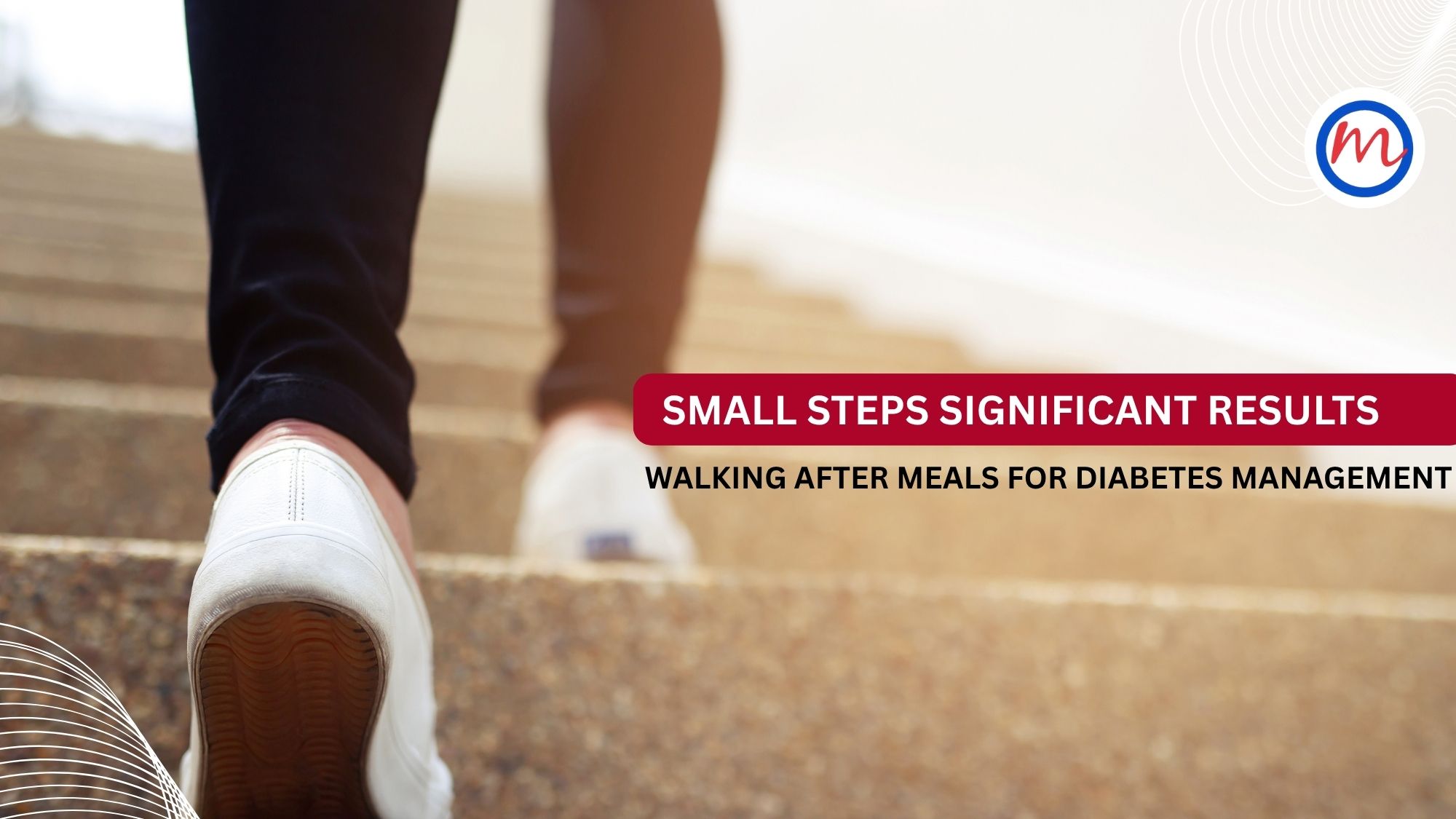SMALL STEPS, SIGNIFICANT RESULTS: WALKING AFTER MEALS FOR DIABETES MANAGEMENT
Managing diabetes does not always require big lifestyle changes. Simple habits like walking can make a big difference in blood sugar control. Among the easiest and most effective ways to control post-meal blood sugar spikes is postprandial walking, which means walking after eating. This gentle activity not only aids digestion but also plays a powerful role in blood sugar management, especially for people with type 2 diabetes or pre-diabetes. Walking after meals helps to lower post-meal blood sugar levels by encouraging muscles to absorb glucose from the bloodstream, reducing the need for insulin. A short 10 to 15 minutes’ walk after each meal can significantly improve glucose control. Research shows that walking after meals is more effective in controlling blood sugar than taking one long walk during the day. Regular post-meal walking also improves insulin sensitivity, which is especially important for people with type 2 diabetes.
Why Does Blood Sugar Spike After Meals?
After eating, especially carbohydrate-rich foods, the body breaks them down into glucose. This glucose enters the bloodstream, causing blood sugar levels to rise. For people with diabetes, the body either doesn’t produce enough insulin or doesn’t use it efficiently, leading to prolonged high blood sugar levels, called postprandial hyperglycemia. These repeated spikes can lead to long-term complications like nerve damage, heart disease, and vision problems.
The Science Behind Post-Meal Walking
Several studies have shown that walking for 10 to 15 minutes after a meal significantly reduces the post-meal blood glucose levels. Walking causes movement in muscles, so muscles absorb glucose from the bloodstream for energy, independent of insulin. This helps lower the sugar levels more quickly than sitting or lying down after eating. Three short walks (10 minutes after each meal) were found to be more effective in lowering blood sugar levels than a single 30-minute walk once a day.
Benefits of Post-Meal Walking for Diabetes
- Lowers postprandial glucose levels – Even gentle walking after meals can help prevent sharp blood sugar spikes, which are common in diabetes.
- Improves Insulin Sensitivity – Regular walking increases how well the body responds to insulin, helping cells absorb glucose more efficiently.
- Supports Weight Management – Walking burns calories and supports metabolism, which can help in reducing insulin resistance.
- Enhances Digestion – Light movement after eating can prevent bloating, indigestion, and sluggishness.
- Heart Health Booster – Walking after meals lowers blood pressure and cholesterol, which are the main concerns for people with diabetes.
Golden Tips for Post-Meal Walking
- When to start – The ideal time to start walking is 30 minutes after each meal. This is when the blood sugar typically begins to rise, and walking at this time can help to reduce the blood sugar spikes naturally.
- Duration – A 10 to 15-minute walk is sufficient. Regular short walks after each meal are more effective for glucose control than one long session.
- Walking place – Short walking doesn’t need a park or a large space, it can easily take place in a hallway, on a terrace, or even within an office building, making it a practical option for all environments. The key is gentle movement, no matter the space.
- Daily Routine – Making post-meal walking a regular habit (especially after lunch and dinner) can lead to long-term improvements in blood sugar levels and overall health.
- Comfort – Choose a relaxed pace and wear supportive footwear. The goal is to feel refreshed, not tired. A comfortable walk is more sustainable and enjoyable in the long run.
Takeaways
- Short walking does not need a gym, fancy shoes, or hours of your day to improve blood sugar. Just 10–15 minutes of walking after each meal can bring surprising health benefits.
- It is a simple, cost-free, and sustainable habit that can enhance diabetes management while uplifting mood and energy levels.
- It helps prevent prolonged high blood sugar, supports weight management, and reduces insulin resistance.
- Additionally, it aids digestion, reduces bloating, and contributes to better cholesterol and blood pressure levels.
So next time you finish a meal, don’t head straight to the couch; step outside and let your feet help manage your glucose naturally.

Leave a Reply